Cross-Channel
Customer Experiences
for the Mobile Era
Deliver personalized messages and interactions that convert across mobile, web, email, SMS, wallet and more—fueled by real-time data, AI and unified orchestration.
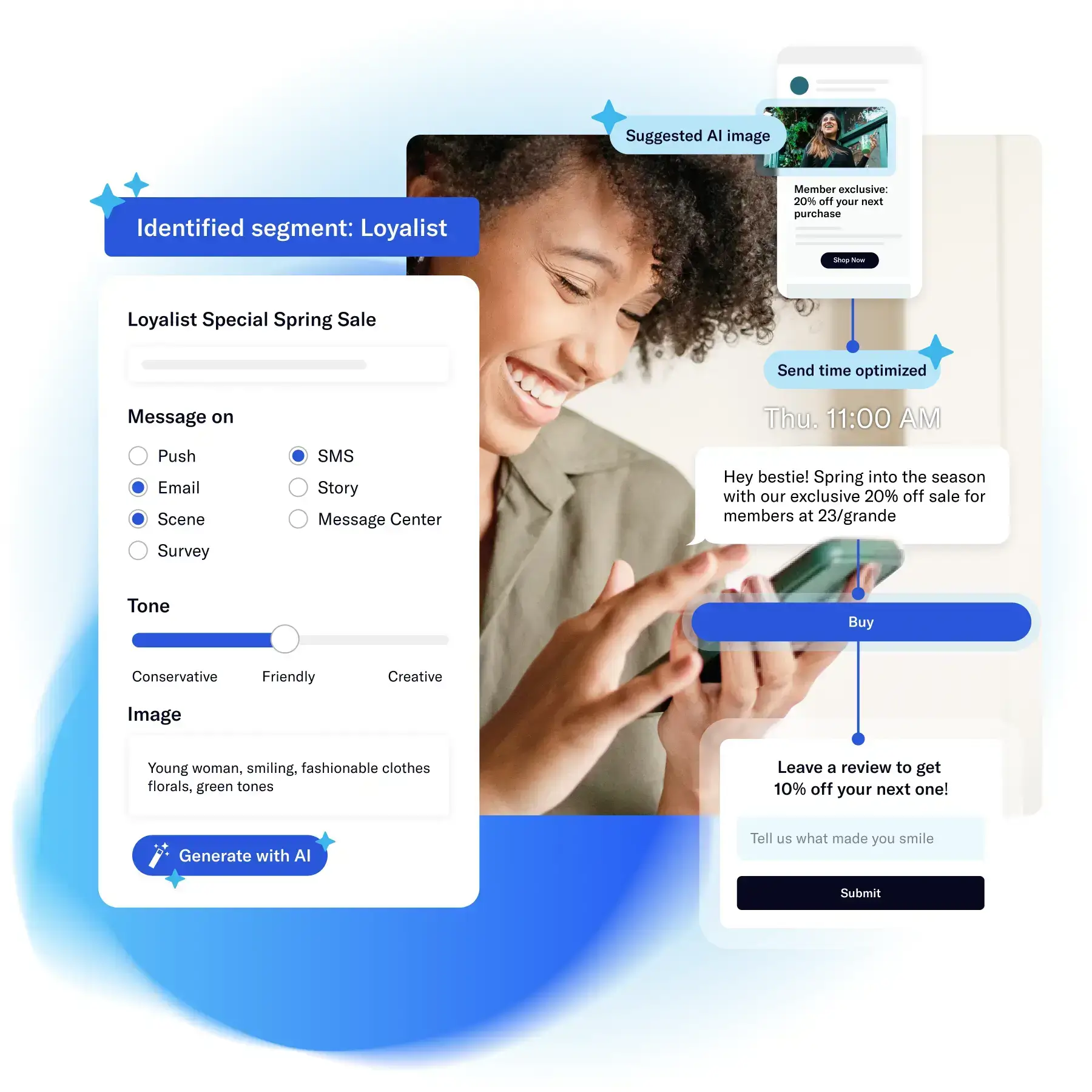
Optimize Conversions with AI
Airship’s AI helps marketers build smarter — not just faster. From Journeys AI to predictive recommendations, we’re engineering what’s next — intelligent agents optimizing for conversions.
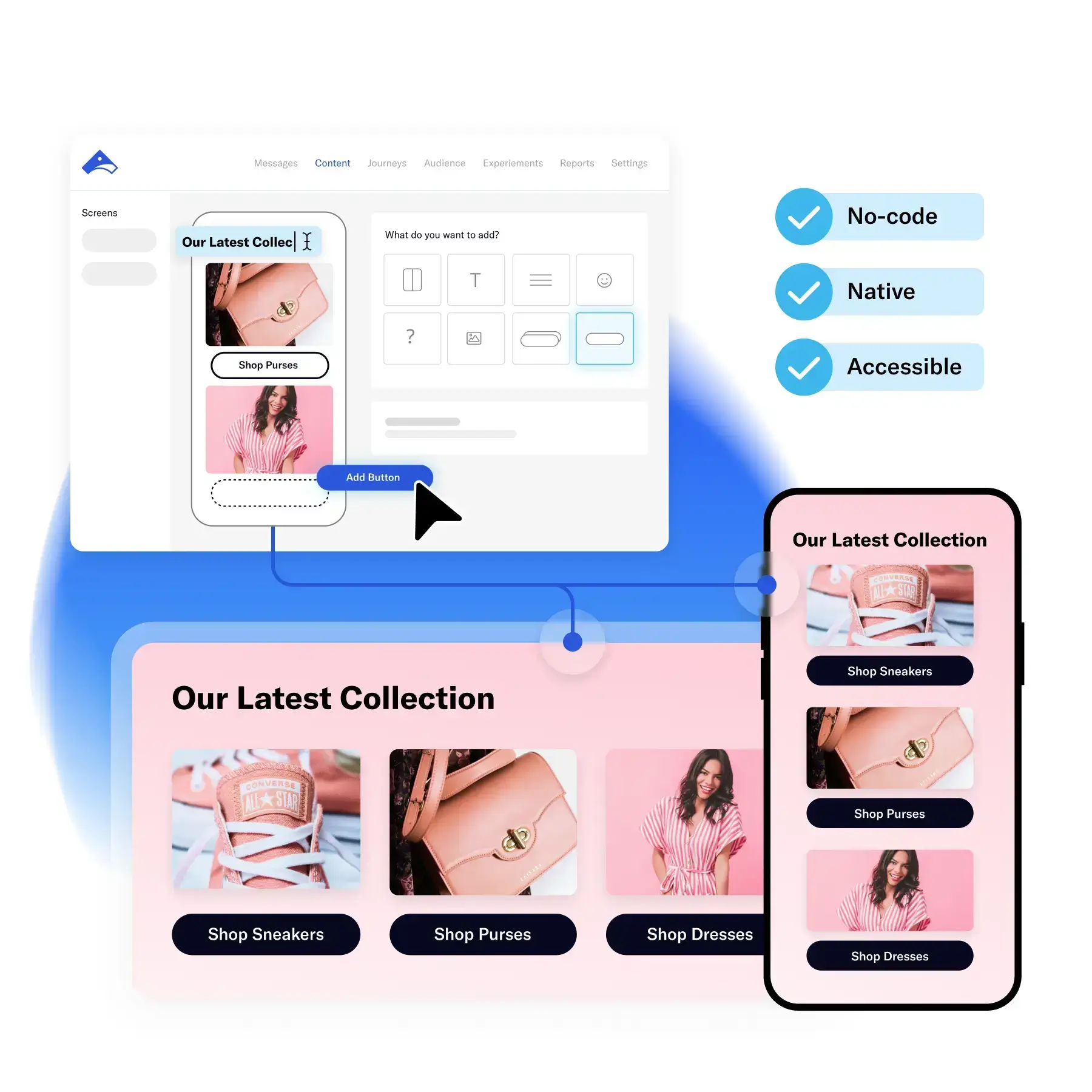
Create Experiences without Limits
Build campaigns uniquely tailored to each customer’s preferences, behaviors and shown intent. Drag-and-drop fully customizable, native experiences that deliver rich, interactive content or real-time updates without dev support!
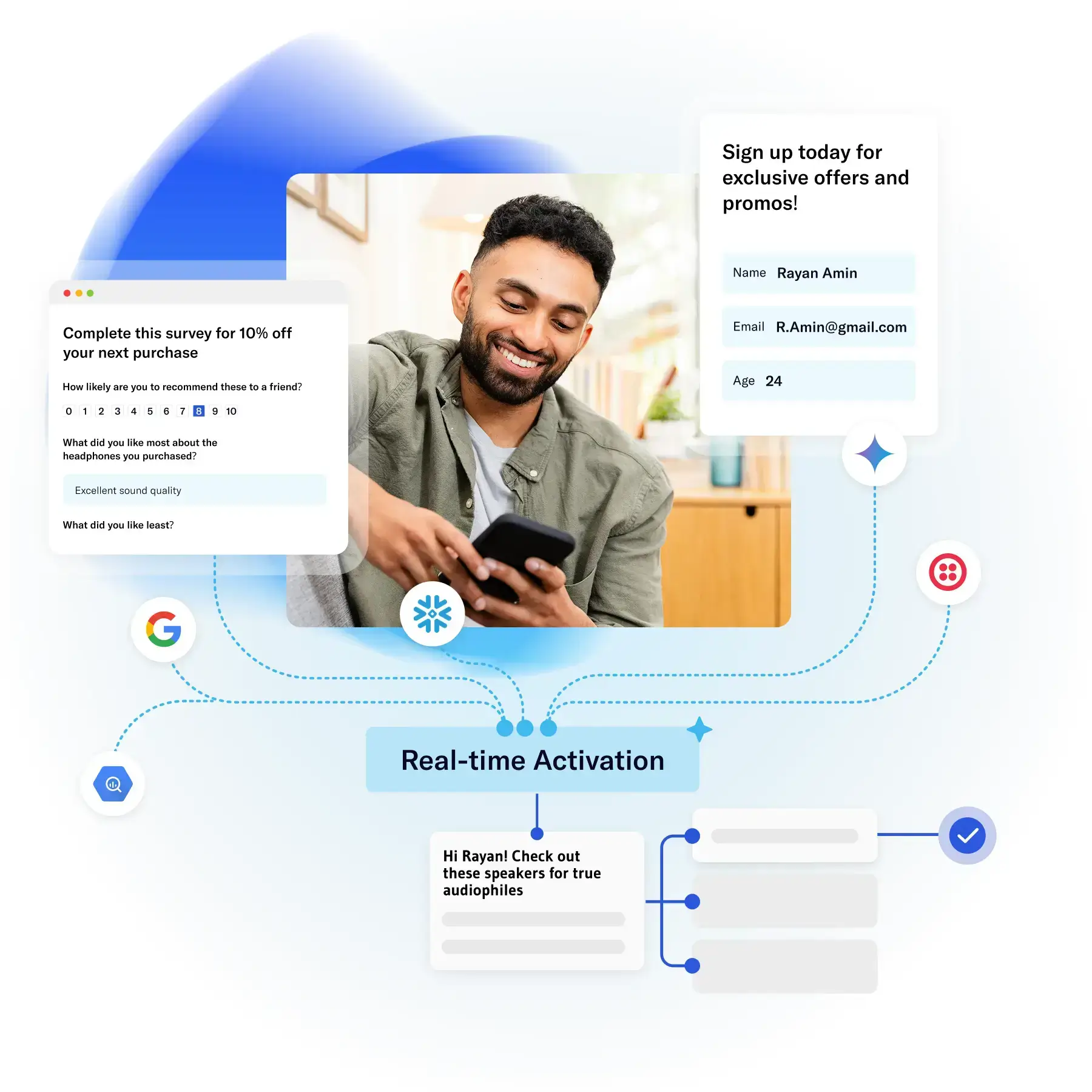
Activate Faster,
Personalize Smarter
Capture and activate zero- and first-party data in real time — without delays or redundancies. Just enriched, high-quality data that fuels AI, sharpens segmentation and powers personalized journeys at scale.
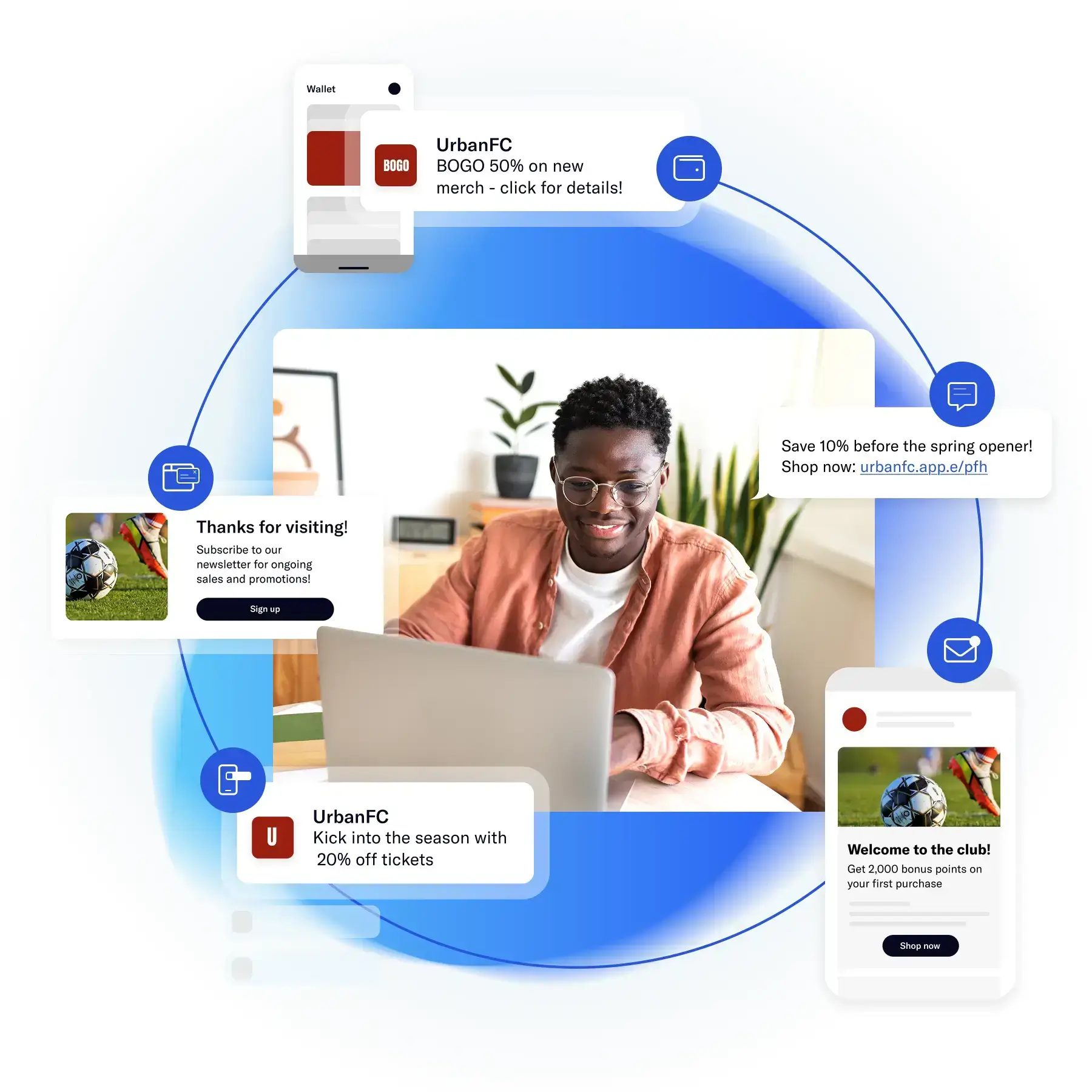
Orchestrate Unified Experiences
Empower teams to build rich, customer-centric interactions once — and deploy across channels. Go beyond basic messaging with unified, personalized journeys that drive repeatable conversions, accelerating loyalty and growth.
The Leader Behind the Leaders
Delivering Cross-Channel Experiences for the World’s Leading Brands
With Airship Mobile Wallet, we’ve started to move away from the dependency on physical Guest Passes, leading to a smaller footprint in terms of both cost and sustainability, all while gaining more Guest Pass participants.”
Michael Brown
Vice President of Technology Solutions




25%
increase in credentials distributed
54%
reduction in credential costs vs. physical-only passes
We set out to help customers get more from travel with a streamlined journey—both in the airport and beyond. Airship’s sophisticated mobile wallet solution made it easy to achieve this, creating a seamless and integrated day-of travel experience that exceeds rising customer expectations.”
Tracy Brooks
Manager Product Management, Mobile App, Alaska Airlines



35%
YoY growth in mobile wallet adoption
90%
of passengers checked in pre-arrival

With Airship, our team was able to build a new and innovative experience for our guests when they were actively engaged with our app, capturing valuable insights to deliver more tailored recommendations.”
Jodi Williams
Vice President of Ecommerce, Ulta Beauty




2.8x
higher conversions from in-app Scene
2.5x
higher conversions from push vs. average

Leveraging Airship, we were able to take this project from conceptualization to execution within two weeks. The efficacy and clarity provided by Airship, coupled with prompt and efficient support team feedback, ensured a fast and seamless deployment.”
Joanne Mathenge
Product Lead – OneFootball




25%
completion rate in the first week
50%
engagement on both Android and iOS platforms

Airship empowered us to transform the CIMB Clicks app into a virtual branch that balances the tailored service that customers expect from in-person interactions with the convenience of online operations.”
Merlyn Tsai
Head of Consumer Banking & Digital, CIMB Singapore





162%
YoY increase in monthly active users
49%
app user growth in just two months
Since switching to Airship’s no-code native app experiences—which allow us to quickly deploy, test, and adapt onboarding flows, surveys, and more—we now receive as many customer survey responses in a day as we used to in an entire month.
Laurent Claramonte
Head of Data – Mobile Applications, Orange France





30x
higher response rates
+9
point increase in NPS
With Airship Mobile Wallet, we’ve started to move away from the dependency on physical Guest Passes, leading to a smaller footprint in terms of both cost and sustainability, all while gaining more Guest Pass participants.”
Michael Brown
Vice President of Technology Solutions




25%
increase in credentials distributed
54%
reduction in credential costs vs. physical-only passes
We set out to help customers get more from travel with a streamlined journey—both in the airport and beyond. Airship’s sophisticated mobile wallet solution made it easy to achieve this, creating a seamless and integrated day-of travel experience that exceeds rising customer expectations.”
Tracy Brooks
Manager Product Management, Mobile App, Alaska Airlines




35%
YoY growth in mobile wallet adoption
90%
of passengers checked in pre-arrival

With Airship, our team was able to build a new and innovative experience for our guests when they were actively engaged with our app, capturing valuable insights to deliver more tailored recommendations.”
Jodi Williams
Vice President of Ecommerce, Ulta Beauty




2.8x
higher conversions from in-app Scene
2.5x
higher conversions from push vs. average

Leveraging Airship, we were able to take this project from conceptualization to execution within two weeks. The efficacy and clarity provided by Airship, coupled with prompt and efficient support team feedback, ensured a fast and seamless deployment.”
Joanne Mathenge
Product Lead – OneFootball




25%
completion rate in the first week
50%
engagement on both Android and iOS platforms

Airship empowered us to transform the CIMB Clicks app into a virtual branch that balances the tailored service that customers expect from in-person interactions with the convenience of online operations.”
Merlyn Tsai
Head of Consumer Banking & Digital, CIMB Singapore





162%
YoY increase in monthly active users
49%
app user growth in just two months
Since switching to Airship’s no-code native app experiences—which allow us to quickly deploy, test, and adapt onboarding flows, surveys, and more—we now receive as many customer survey responses in a day as we used to in an entire month.
Laurent Claramonte
Head of Data – Mobile Applications, Orange France






30x
higher response rates
+9
point increase in NPS
Explore More Ways to Drive Conversions

Master Cross-Channel Orchestration for Growth
Make every touchpoint in the customer journey count toward your conversion and loyalty goals. Download our new playbook to…
Read it Now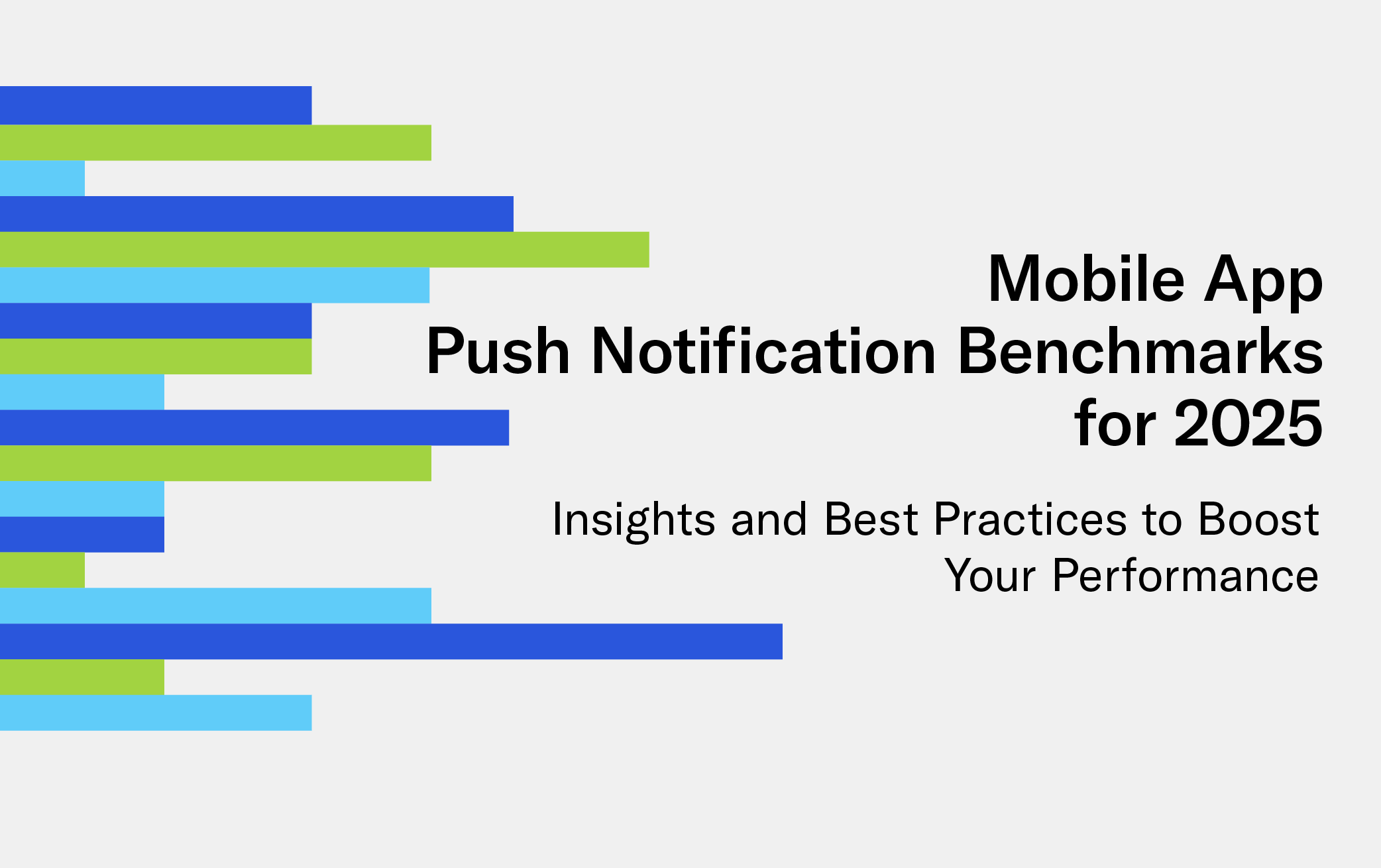
Mobile App Push Notification Benchmarks for 2025
Push notifications are central to helping you capture customers’ attention on today’s most valuable and visible real estate: smartphone…
Read it Now
Can Your Martech Stack Meet Customer Expectations in 2025?
2025 is set to redefine the brand-customer relationship. New marketing channels, data deprecation, AI and emerging tech present new…
Watch it Now
Create exceptional experiences at scale with the world’s leading enterprise-grade, security-centric customer experience platform, purpose-built for today’s mobile-first economy.




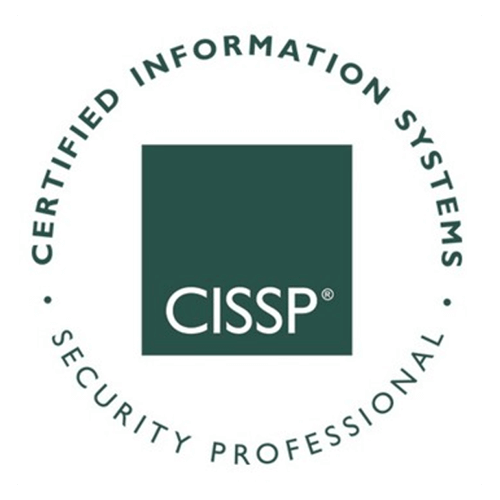
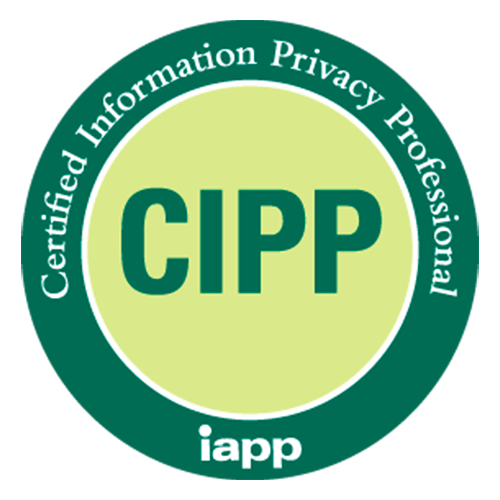






See it in Action!
Let us show you how the world’s leading brands use our platform to make every customer interaction more valuable.













